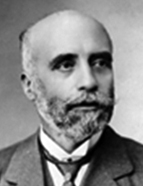

Assisted by updated bibliography, he greatly benefited from information supplied by Hugo Schuchardt, a Creolist he had met at the University of Graz in 1900. Leite then embarked on several trips to Europe where he visited universities in the Netherlands and Germany. Upon his return to Portugal, he taught an open philology course at the Biblioteca Nacional (1903-1911), which led to the publication of two handbooks, Textos Arcaicos [Archaic Texts] (1903) and Lições de Filologia Portuguesa [Lessons on Portuguese Philology] (1911). While working for the museum, he participated in archaeological conferences in Athens (1905), Mechelen (1907), Cairo (1909) and Rome (1912), in the latter two as head of the prehistoric archaeology department.
Following the establishment of the Republic, Leite de Vasconcelos found new areas of activity in the country’s renewed institutions. In 1911, he was member of the committee entrusted with defining the basics for orthography in schools and official documents, as well as orthographic vocabulary; in the Academia das Ciências, he was president of the committee responsible for the writing of a new dictionary (until 1916). In August of the same year, he was appointed professor of the new Faculdade de Letras da Universidade de Lisboa, which had replaced the Curso Superior de Letras. However, he was not given subjects where his field of interests and research were reflected, and through which he might have been able to recruit disciples and establish a “school”. He taught classical philology, French language and literature, and comparative grammar, and occasionally archaeology, epigraphy, and numismatics. It was only in the last years of his academic career that he was offered the opportunity to teach Portuguese philology.
From the 1920s onwards, in poorer health and engaged in his work at the Faculdade, he reduced his participation in archaeological excavations and geared most of his research towards ethnography. In 1927, he published a lengthy introduction on ethnography in the Revista Lusitana (vol. XVI), and De Terra em Terra - Excursões arqueológico-etnográficas através de Portugal (Norte, Centro e Sul) [From Place to Place - Ethnographical and archaeological expeditions in Portugal (Northern, Central and Southern Regions]. Having reached the official retirement age in 1929, he withdrew from public office. He remained as honorary director of the museum (which was renamed “Museu Etnológico do Dr Leite de Vasconcelos” [Ethnological Museum of Dr Leite de Vasconcelos].
